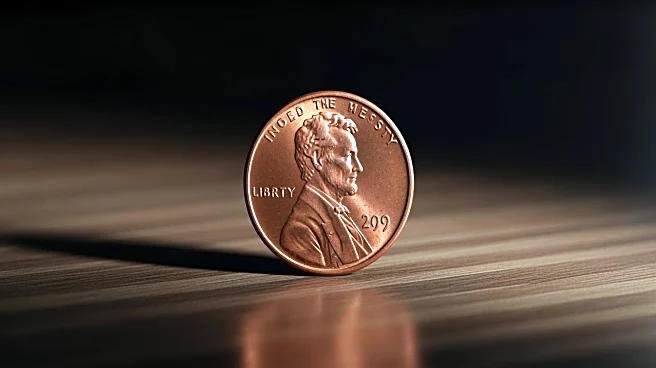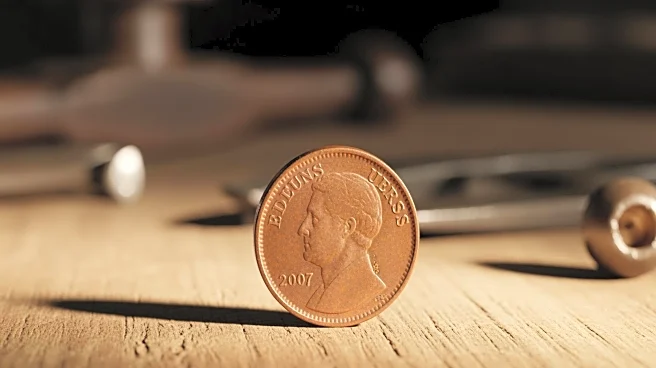What's Happening?
The last batch of US pennies, minted in Philadelphia, is set to go up for auction next month, with experts predicting they could sell for up to $5 million each. These final pennies, minted after 232 years of circulation, contain a unique omega symbol,
marking their special status. John Feigenbaum, a rare coin expert, has noted that collectors are likely to be highly interested in these modern rarities, with the value of each coin estimated between $2 million and $5 million. The auction is expected to attract significant attention from collectors and investors, eager to own a piece of US currency history.
Why It's Important?
The auction of the final US pennies represents a unique opportunity for collectors and investors to acquire a piece of American numismatic history. The high estimated value of these coins underscores the cultural and historical significance attached to them, reflecting broader trends in the collectibles market. The discontinuation of the penny also highlights shifts in currency production policies, driven by economic considerations and the increasing prevalence of digital transactions. This event may influence future decisions regarding the production and circulation of other coins, as well as broader discussions about the role of physical currency in a digital age.
What's Next?
The upcoming auction is likely to set new records for coin sales, with collectors and investors vying for these rare pieces. The outcome of the auction could influence the valuation of other rare coins and collectibles, potentially impacting the broader numismatic market. Additionally, the discontinuation of the penny may prompt further evaluations of other coins, such as the nickel, which also face production cost challenges. The government may consider additional measures to streamline currency production and reduce costs, while continuing to invest in domestic mining operations to secure essential materials.
Beyond the Headlines
The auction of the final pennies highlights the enduring appeal of physical currency as a collectible, even as digital transactions become more prevalent. This event raises questions about the cultural significance of currency and its role in shaping national identity. The move also reflects broader economic trends, including the shift towards sustainable resource management and the strategic importance of securing domestic sources of essential materials for technological and industrial applications.
















